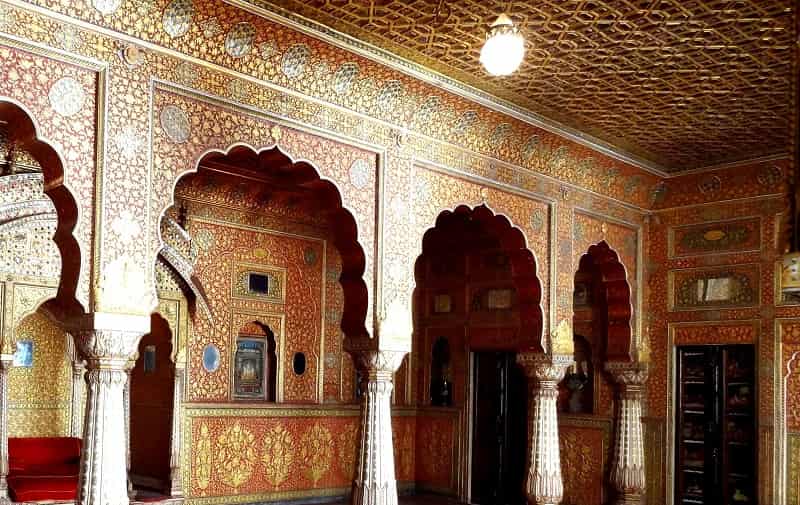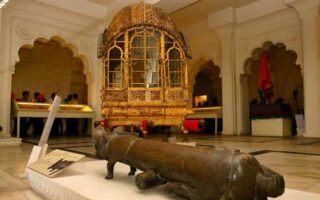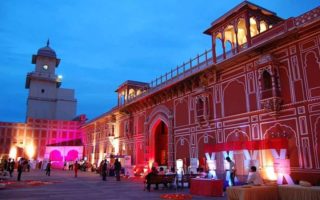- Location: Junagarh Fort, Bikaner, Rajasthan
- Attractions: Antique Rajput Weaponry, first world war biplane
- Timings: 10.00 am to 4.30 pm
- Closed: Friday and gazetted holidays
- Entry Fees:
- Fee for full Museum: Rs.50 per head
- Fee for part Museum: Rs.10 per head
- Fee for ordinary camera: Rs.30
- Fee for movie camera: Rs.100
- How to reach here: The nearest airport is at Jodhpur which is well connected with all major cities of India. Bikaner is also well connected by rail and roads.

The museum within the Forts is well known as the Junagarh Fort of Museum which was established in 1961 by Maharaja Dr. Karni Singhji. The halls of Ganga Mahal which was been added by the Maharaja Gailya Singh has been converted into museum. Junagarh Fort of Museum hosts a unique collection of antique Rajput weaponry including camel hide shells, inlaid handguns, camel guns, jade handle daggers, etc. In addition, it also includes silver and gold howdahs, First World War biplane, Jhulas etc. Other items on display are the personal items and photographs of Maharaja Ganga Singh.
Junagarh Fort of Museum also has a display of the Persian and Sanskrit manuscripts, jewels, farmans, portrait galleries, miniature paintings, enamelware, silver, palanquins, royal costumes and war drums. The Junagarh Fort is the most enforcing forts; this was Chintamani Fort earlier. Then in the earlier 20th century it was nominated as “Junagarh fort” or “Old Fort”. The fort is also popular has an unconquered fort till date and being a fact that it is not placed on the hills.
This spectacular Junagarh Fort of Museum was constructed in 1588 to 1593, by Raja Rai Singh Ji who was the sixth Ruler of Bikaner, under the oversight of, the Prime Minister of Raja Rai Singh Ji, Karan Chand. Deep moats and high walls are encircled around the fort. There are thirty seven bastions protecting the fort with two gates, which are the entrance to the fort, the main one is called as the Sun Gate or the Suraj Pole. Also there are thirty seven similar red bastions in the front of the Junagarh Fort of Museum that lets in delicate balconies, temple and pavilions, cabins and towers palaces with elaborately carved windows.
The foregrounds of the Junagarh Fort of Museum are the Moon Palace or the Chandra Mahal which is splendidly decorated panels with carved marbles, mirrors and paintings. The Flower Palace or the Phool Mahal including the Karan Mahal and the multi-stored Anup Mahal was utilised by the rulers as their governance chambers. The fort also boasts a lovely Hari Mandir, here the worship of the royals were held.
- Also Read: Most Famous Museums of Rajasthan


